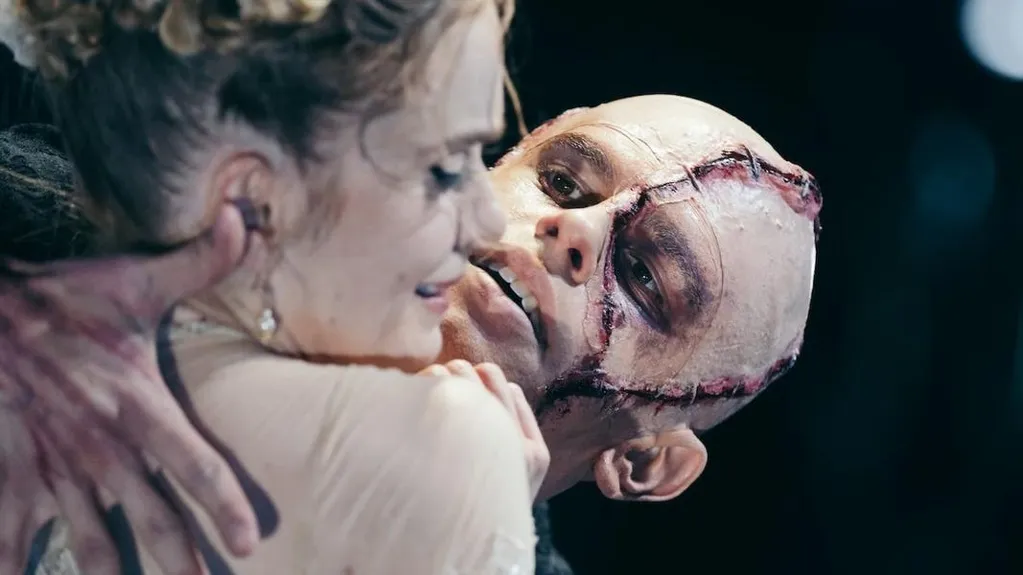Forbes contributors publish independent expert analyses and insights.
San Francisco Ballet's production of Liam Scarlett's "Frankenstein" opens tonight, October 2, at the Segerstrom Center for the Arts in Costa Mesa, California. The artful production arrives more than two centuries after Mary Shelley began writing her tale at age 18; she anonymously published "Frankenstein; or, The Modern Prometheus" on January 1, 1818.
In Scarlett's hands, the gothic masterpiece becomes a compelling dance narrative that asks who the real monster is -- framed by hand-painted sets seared with lightning bolts and exploding sparks.
The production, which runs through October 5, was co-commissioned by Britain's Royal Ballet and San Francisco Ballet. "Frankenstein" premiered in London at the Royal Opera House in 2016 with a 2017 staging by the San Francisco Ballet at the War Memorial Opera House, along with the ballet's other productions.
British choreographer Liam Scarlett (1986-2021) was an artist in residence with the Royal Ballet and artistic associate with Queensland Ballet. He choreographed novel new works for varied companies, including the Norwegian National Ballet, Miami City Ballet, English National Ballet and others.
Scarlett's choreography has a spare elegance as it probes the novel's emotional foundations. The traditional bones of the sci-fi horror novel are there: Victor Frankenstein's blind ambition, the desperate loneliness of his creature, and the violence that ensues because its maker refuses to take responsibility for his creation.
With its 19th-century Geneva setting, the staging is rich with period costumes. The props are fittingly theatrical. During the Creature's animation, a steampunk contraption lowers from the ceiling along with Frankenstein's operating table -- illuminated with pyrotechnics and projections, the latter created by Finn Ross.
San Francisco Ballet's artistic director Tamara Rojo calls the work a "monumental piece" that marries "classical technique with demanding dramatic acting roles and a cinematic, immersive visual approach."
"Scenic designer John Macfarlane's anatomy-theater classroom is spectacular with its period-specific elements that include a late 18th century electrostatic machine, tubes and wires emitting staticky pops and snaps," writes Terez Rose in Bachtrack, in a review of the March 2025 San Francisco production. Describing the Creature’s reanimation that’s paired with lightning flashes and sparks, Rose writes that the scene “is as vivid and cinematic as ballet gets.”
Macfarlane is known for his work at the Royal Opera House, the Metropolitan Opera and major ballet companies worldwide.
Dancer Joseph Walsh, in the role of Victor Frankenstein, calls Macfarlane’s sets the most immersive that he’s ever performed on, in an interview with Cultural Daily writer Ann Haskins. “It’s almost imperceptible how the backdrop starts to unroll, and it’s just lighting and his painting, hand-painted sets by him that he designed to change hue as the emotions intensify,” he says. “It all feeds into the performance of the artists on stage.”
The production’s original score is by Lowell Liebermann. It’s performed live during the October staging by the Pacific Symphony Orchestra, conducted by Martin West.
Various dancers take on each of the title roles. They include Joseph Walsh, Fernando Carratalá Coloma, Esteban Hernández, Dores André, Frances Chung, Joshua Jack Price and Wei Wang.
The monster is perhaps a fitting one for our age. The bolts-and-stitches, cobbled together creature is all about the consequences of playing god and creating irresponsibly and its attendant hubris. Moreover, the creature’s otherness, which is paired with his self-awareness and vulnerability, is rejected simply because he’s different. He becomes monstrous only because the world refuses to see him as human.
Tamara Rojo writes: "In bringing Mary Shelley's classic to the stage, the work explores fundamental questions of humanity and hubris, amplifying the existential gothic drama in the way only ballet can."
